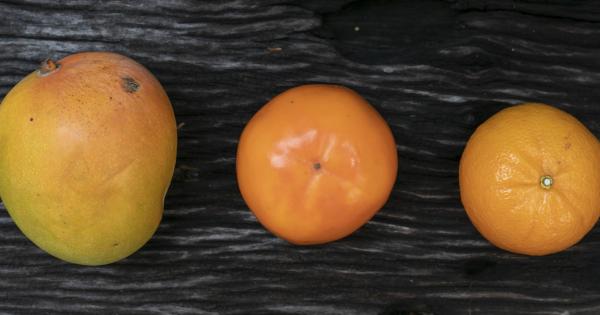Welcome to our comprehensive guide on juicing techniques for healthy living. In this article, we will explore various aspects of juicing, from the benefits it offers to different juicing techniques and tips to enhance your juicing experience.
Juicing is a popular method of extracting the nutritious content from fruits and vegetables, providing a convenient and delicious way to boost your daily intake of vitamins and minerals.
The Benefits of Juicing
Before diving into the different juicing techniques, it’s important to understand why juicing is considered beneficial for our health. Here are some key advantages of incorporating juicing into your lifestyle:.
1. Increased Nutrient Absorption
When you juice fruits and vegetables, the process breaks down the cell walls, making it easier for your body to absorb the nutrients.
This allows for more efficient nutrient uptake and ensures that you get the maximum benefit from the produce you consume.
2. Convenient Way to Boost Nutrient Intake
With our busy schedules, it can be challenging to consume a variety of fruits and vegetables every day. Juicing provides a quick and convenient way to increase your nutrient intake.
By juicing a variety of produce, you can easily consume a wide range of vitamins, minerals, and antioxidants in a single glass.
3. Support for a Strong Immune System
Fruits and vegetables are rich in immune-boosting compounds, including vitamin C, antioxidants, and phytochemicals.
Regularly juicing these immune-supportive foods can help strengthen your body’s defenses and reduce the risk of various illnesses and diseases.
4. Improved Digestion
Juicing can help improve digestion by providing a concentrated dose of enzymes that promote efficient breakdown and absorption of nutrients. Additionally, the high water content of juice can help hydrate your body and support healthy bowel movements.
5. Weight Management
Many fruits and vegetables used in juicing are low in calories and high in fiber, making them excellent choices for weight management.
Juicing can help you feel full and satisfied while reducing calorie intake, making it a valuable tool for those looking to shed some pounds.
Juicing Techniques
Now that we’ve covered the benefits of juicing, let’s explore some popular juicing techniques to help you get the most out of your fresh produce:.
1. Cold Press Juicing
Cold press juicing, also known as masticating juicing, involves using a slow-turning auger to crush the fruits and vegetables. This technique minimizes heat production and oxidation, preserving the nutrients and enzymes in the juice.
Cold press juicers are generally more expensive than other types but offer superior juice quality.
2. Centrifugal Juicing
Centrifugal juicers are the most common type of juicers found in households. They work by spinning the produce at high speeds, extracting the juice through a strainer.
While quick and convenient, this technique can introduce more oxygen and heat into the juice, resulting in a shorter shelf life and slightly lower nutrient content.
3. Citrus Juicing
If you love your citrus fruits, investing in a dedicated citrus juicer can be worthwhile. These juicers are specifically designed to extract maximum juice from citrus fruits like oranges, lemons, and grapefruits.
They are easy to use and clean, making them a perfect choice for juicing citrus at any time.
4. Green Juicing
Green juices have gained immense popularity for their high nutrient content. Kale, spinach, wheatgrass, and other leafy greens are commonly used in green juices.
To extract the juice from these fibrous greens effectively, consider using a slow or cold press juicer. These juicers are designed to handle leafy greens with ease.
5. Blender Juicing
Don’t have a juicer? No problem! You can still enjoy the benefits of juicing by using a blender. Blend your fruits and vegetables with some water and strain the mixture with a fine-mesh sieve or nut milk bag to separate the juice from the pulp.
While this technique may not provide a completely smooth juice, it’s a budget-friendly option for beginners.
Juicing Tips for Healthy Living
To make the most of your juicing experience, consider the following tips:.
1. Choose Fresh, Organic Produce
Opt for fresh, organic fruits and vegetables whenever possible. Organic produce is free from harmful pesticides and tends to be more nutrient-dense.
2. Combine Different Colors
Vary your juice recipes by including a mix of colorful fruits and vegetables. Different colors signify different phytonutrients, vitamins, and minerals, ensuring a well-rounded nutrient profile.
3. Don’t Forget the Fiber
Although juicing removes some of the fiber content, you can still add it back to your diet. Consider using the leftover pulp in recipes such as soups, muffins, or compost it for a natural fertilizer.
4. Drink Immediately or Store Properly
Fresh juice is best consumed immediately to retain optimal nutrient content. However, if you need to store it, use airtight containers and refrigerate for up to 24-48 hours. Adding a squeeze of lemon juice can help preserve the freshness for longer.
5. Experiment with Recipes
Juicing offers endless possibilities for creating unique and delicious flavor combinations. Don’t be afraid to experiment with different fruits, vegetables, and even herbs and spices to find your favorite combinations.
Conclusion
Juicing is a wonderful way to incorporate more fruits and vegetables into your diet and boost your overall health. Whether you choose cold press, centrifugal, or blender juicing, the key is to find a method that suits your needs and preferences.
With the right juicing techniques and tips, you can enjoy a refreshing glass of nutrient-packed juice every day, enhancing your journey towards a healthier and more vibrant lifestyle.





























